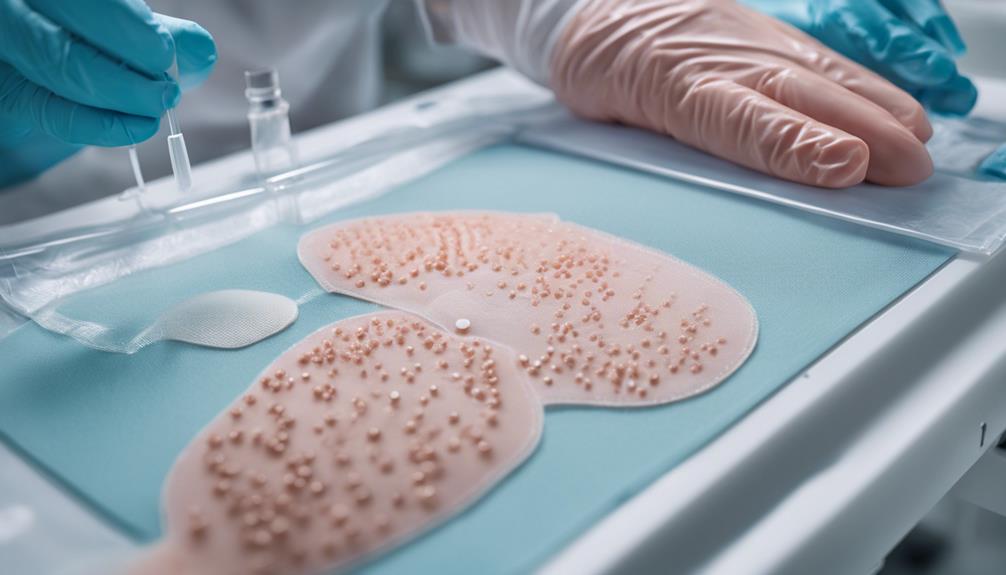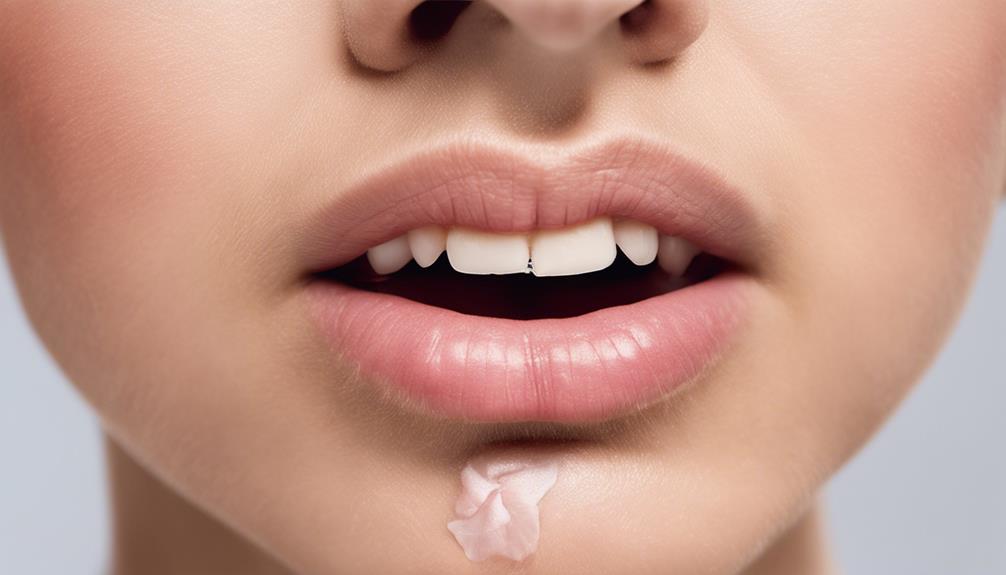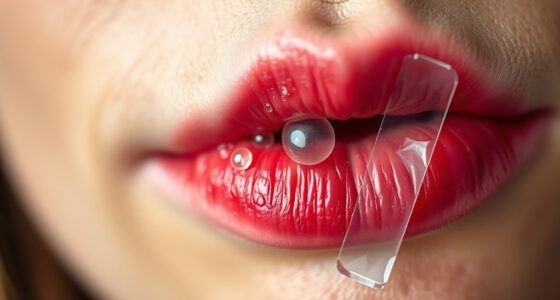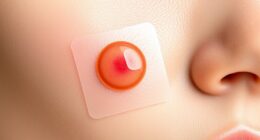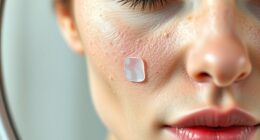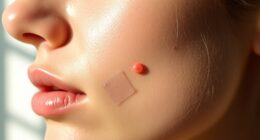When developing acne patches, the gel-forming properties of hydrocolloid are essential. An adhesive layer, typically made from materials such as acrylic or silicone, ensures that the patch securely and gently adheres to the skin. This combination helps to absorb pus, excess oil, and moisture from pimples, ultimately promoting faster healing. By directly applying to the skin, a protective barrier is created that prevents the spread of bacteria and helps with hydration. The final layer serves as a shield against irritants, aiding in healing and reducing the temptation to pick at pimples. To gain a deeper understanding of how hydrocolloid and adhesive layers work together to benefit skin health in pimple patch production, click here.
Key Takeaways
- Hydrocolloid core absorbs pus and oil for healing.
- Adhesive layer ensures patch stays in place effectively.
- Infusion of hydrocolloid aids in reducing inflammation.
- Application creates a barrier, promoting faster healing.
- Protective barrier prevents external irritants, aiding recovery.
Hydrocolloid: The Primary Material Used
In making pimple patches, we primarily utilize hydrocolloid due to its exceptional gel-forming properties. Hydrocolloid is a gel-forming polymer that was initially used in wound care but has proven to be highly effective in treating open acne pimples. These patches contain an inner layer that's adept at absorbing fluid from pimples, which not only aids in promoting skin healing but also helps prevent infection.
The outer layer of hydrocolloid patches is typically crafted from polyurethane film, providing an additional layer of skin protection. One of the key benefits of hydrocolloid patches is their ability to soak up infected pus from pimples, contributing to faster healing times. By harnessing the unique properties of hydrocolloid, we can create pimple patches that serve the dual purpose of promoting skin health and protecting against further irritation.
Adhesive Layer Creation Process
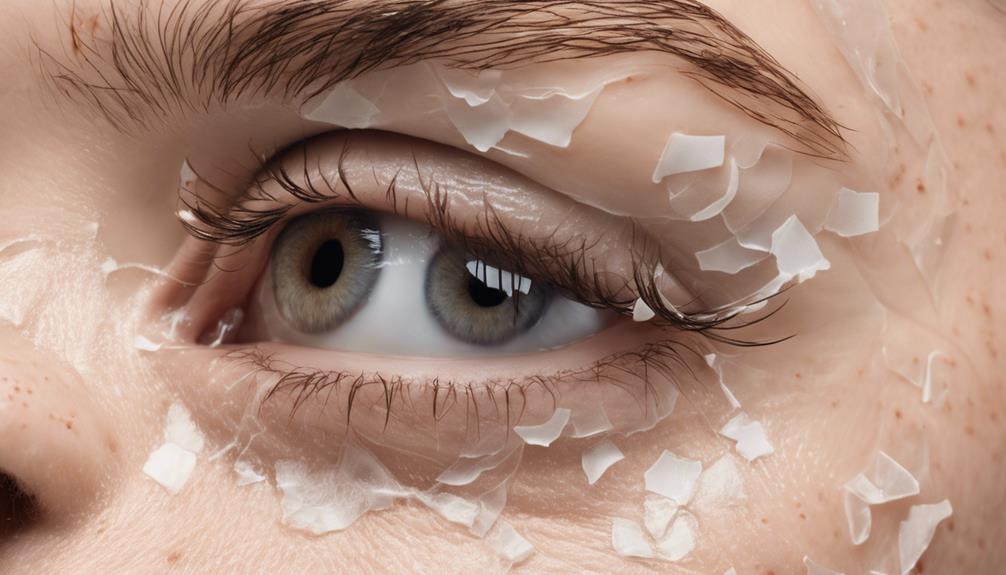
Utilizing materials like acrylic, silicone, or hydrogel, we carefully craft the adhesive layer of pimple patches to guarantee secure placement over acne blemishes. The adhesives used in this process are essential for keeping the hydrocolloid patch in place over the pimple, ensuring effective treatment.
Our focus on precision during the creation of the adhesive layer is vital to achieve proper adhesion to the skin. Different types of adhesives are selected based on the desired level of stickiness and skin compatibility. It's important that the adhesive layer is gentle on the skin while providing a strong hold to keep the patch in position for effective healing.
Infusion of Hydrocolloid
Crafting pimple patches involves infusing hydrocolloid, a gel-forming material that absorbs excess oil and moisture from pimples, aiding in faster healing and reduction of inflammation. Hydrocolloid creates a favorable environment that promotes skin regeneration by drawing out impurities and fluids, helping in the treatment of acne.
The infusion of hydrocolloid in pimple patches not only absorbs pus but also forms a protective barrier, preventing external bacteria from causing further irritation. This innovative technology is widely used in skincare for its ability to flatten pimples effectively.
Patches with hydrocolloid are known for their capacity to create an advantageous healing environment, contributing to a clean and healthy skin surface. By utilizing the benefits of hydrocolloid, pimple patches offer a targeted solution for acne treatment, ensuring that the skin is cared for and protected during the healing process.
Application Directly Onto the Skin
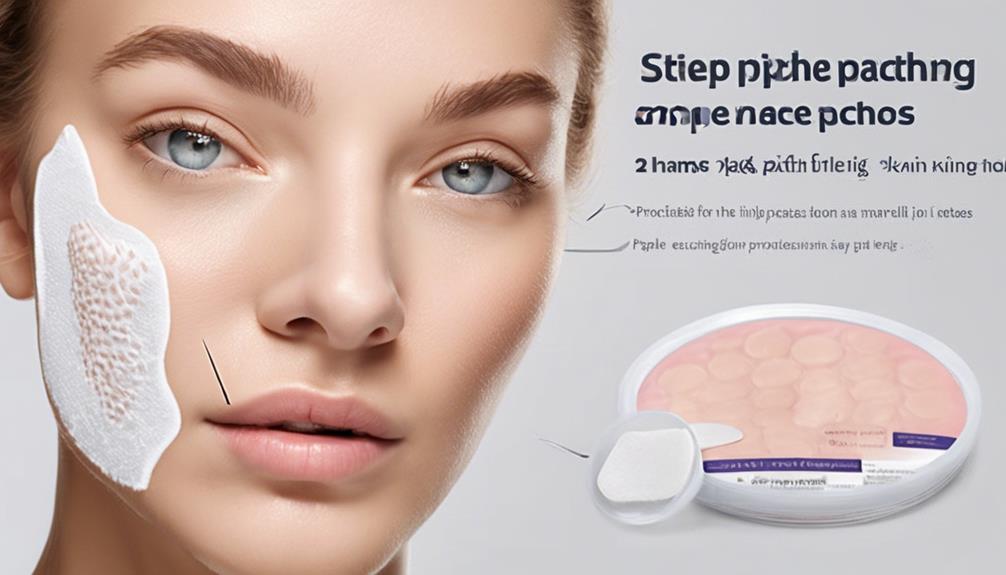
When applying pimple patches directly onto the skin, they establish a protective barrier against external irritants and pollutants to assist in the healing process.
These Acne Patches, made of a hydrocolloid patch, work by absorbing excess fluid from the pimple, which not only flattens the bump but also prevents the spread of bacteria.
By creating a moist environment, the patch promotes faster healing by keeping the area hydrated and protected from environmental factors that could worsen the condition.
The Active Ingredients in the patch penetrate the skin gently, delivering their healing properties directly to the affected area. These ingredients work synergistically to promote faster recovery and soothe discomfort. By understanding skincare patch benefits, users can make informed decisions about incorporating these innovative solutions into their daily routines. Additionally, the targeted approach minimizes systemic exposure, allowing for effective treatment with minimal side effects.
This direct application method not only safeguards your skin from further irritation but also ensures that the patch stays in place for an extended period, allowing the active ingredients to work effectively.
Protective Barrier Formation
After applying pimple patches directly onto the skin to create a protective barrier, it's important to understand how this barrier formation contributes to the healing process. Pimple patches act as a shield, safeguarding the affected area from external irritants that could worsen the condition. By forming a protective barrier, these patches play a vital role in infection prevention, reducing the scarring risk associated with pimples.
The snug adherence of the patches not only creates a healing-conducive microenvironment but also aids in absorbing excess fluids, promoting faster healing while minimizing the spread of bacteria. Moreover, the presence of pimple patches can help deter the temptation to pick or pop the pimple, allowing natural healing processes to take place undisturbed.
Frequently Asked Questions
How Are Pimple Patches Made?
Pimple patches are made by combining hydrocolloid, a gel-forming material, with adhesives like acrylic or silicone to create a patch that absorbs oil and dirt from pimples. They usually have an inner hydrocolloid layer for fluid absorption and an outer polyurethane layer for protection.
Some patches also include active ingredients such as salicylic acid or tea tree oil for enhanced healing benefits. This process results in a patch that promotes faster and more effective healing of pimples.
What Is the Chemistry Behind Pimple Patches?
Pimple patches utilize a hydrocolloid layer to absorb oil and moisture, aiding in pimple healing. The polyurethane outer layer protects the skin, while adhesives like acrylic or silicone keep the patch in place.
Additional ingredients such as salicylic acid or tea tree oil target specific skin concerns, enhancing the healing process. This unique composition creates a moist environment, facilitating faster recovery and reducing infection risks.
What Is the Science Behind Hydrocolloid Patches?
Hydrocolloid patches work by absorbing oil and dirt from pimples, aiding in faster healing. The inner layer absorbs excess fluid, while the outer layer shields the skin. Adhesives like acrylic keep the patch in place.
Ingredients like salicylic acid enhance healing. These patches create a moist healing environment by absorbing oil and promoting skin recovery.
Do Dermatologists Recommend Pimple Patches?
Yes, dermatologists do recommend pimple patches for targeted acne treatment. They view pimple patches as a beneficial addition to acne care routines. Patches, especially hydrocolloid ones, are favored for their ability to absorb excess fluid and promote faster healing.
Dermatologists suggest using them on clean, dry skin for best results. Studies have shown that pimple patches can help reduce inflammation, prevent infection, and improve overall acne healing outcomes.
Conclusion
To sum up, pimple patches are made using hydrocolloid, a material that forms a protective barrier over the blemish. This adhesive layer is infused with ingredients to help promote healing.
When applied directly onto the skin, the patch works to draw out impurities and reduce inflammation. Just like a shield against acne, these patches offer a simple yet effective solution for clearer skin.
